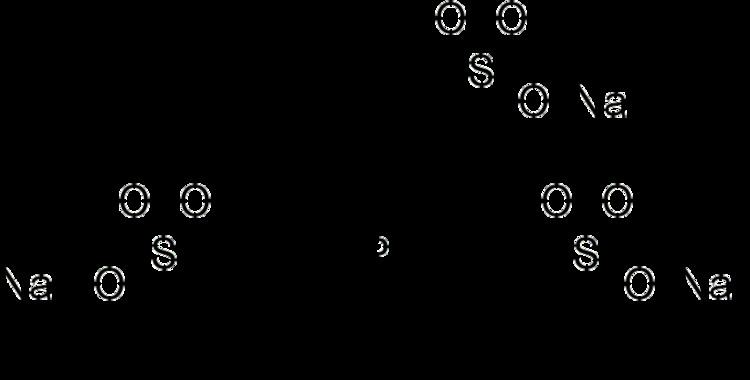Formula P(C6H4SO3Na)3 Pubchem 4348292 | Molar mass 568.42 g/mol | |
 | ||
Appearance White microcrystalline solid | ||
3,3′,3″-Phosphanetriyltris(benzenesulfonic acid) trisodium salt (abbreviated TPPTS when isolated and tppts as a ligand), is an organic compound that is also known as sodium triphenylphosphine trisulfonate. The compound has the formula P(C6H4SO3Na)3. This white microcrystalline solid is an unusual example of a water-soluble phosphine. Its complex with rhodium is used in the industrial production of butyraldehyde.
Contents
Synthesis
Tppts is synthesized by sulfonation of triphenylphosphine. The sulfonation occurs at one meta-position of each of the three phenyl rings. The sulfonation agent is oleum, a solution of sulfur trioxide in sulfuric acid. The resulting trisulfonic acid is then treated with triisooctylamine and sodium hydroxide. Immediately upon dissolving in the reaction medium, the phosphine is protonated. It is the phosphonium salt that undergoes the sulfonation:
HP(C6H5)3+ + 3 SO3 → [HP(C6H4SO3H)3]+[HP(C6H4SO3H)3]+ + 4 N(C8H17)3 → [HN(C8H17)3]3[P(C6H4SO3)3] + [HN(C8H17)3]+[HN(C8H17)3]3[P(C6H4SO3)3] + 3 NaOH → P(C6H4SO3Na)3 + 3 N(C8H17)3 + 3 H2OAs a Lewis base, tppts is stronger than triphenylphosphine.
Uses in hydroformylation
Complexes of tppts are very soluble in water, which is the basis of its industrial application. Tppts-based rhodium catalysts were introduced in 1984 for a two-phase hydroformylation of propene by Ruhrchemie. Hydroformylation, also known as oxo synthesis, is the reaction of an alkene with carbon monoxide and hydrogen. Traditionally, hydroformylation is catalyzed by rhodium and cobalt complexes in nonaqueous solution.
